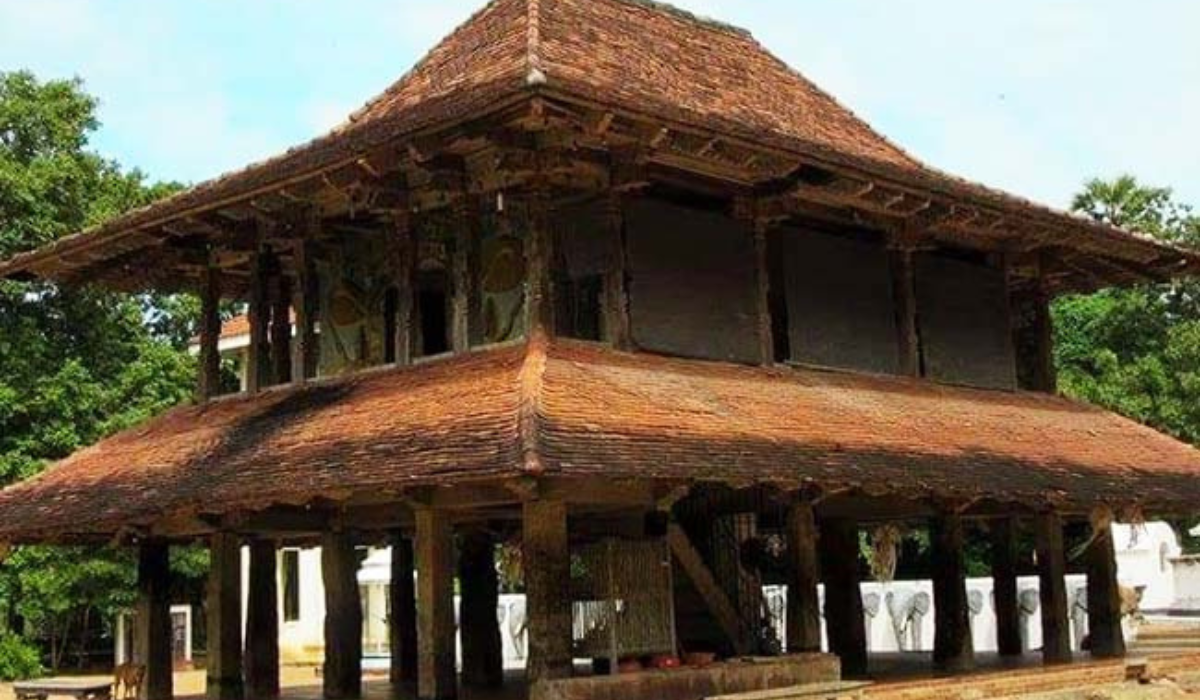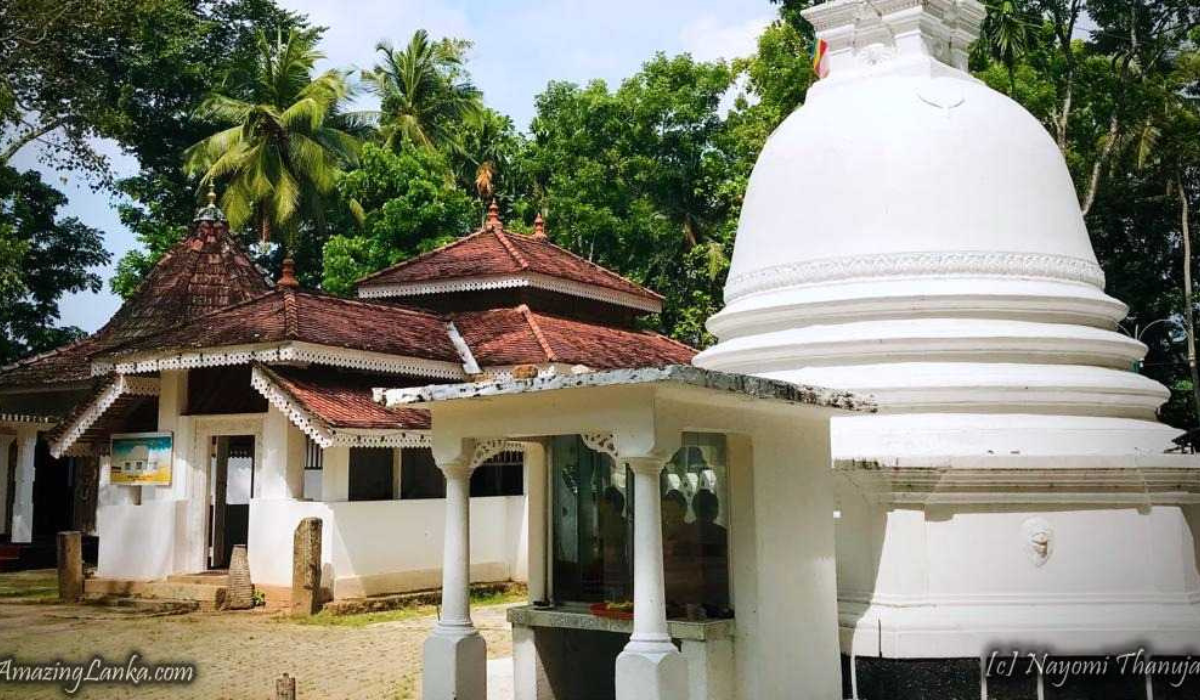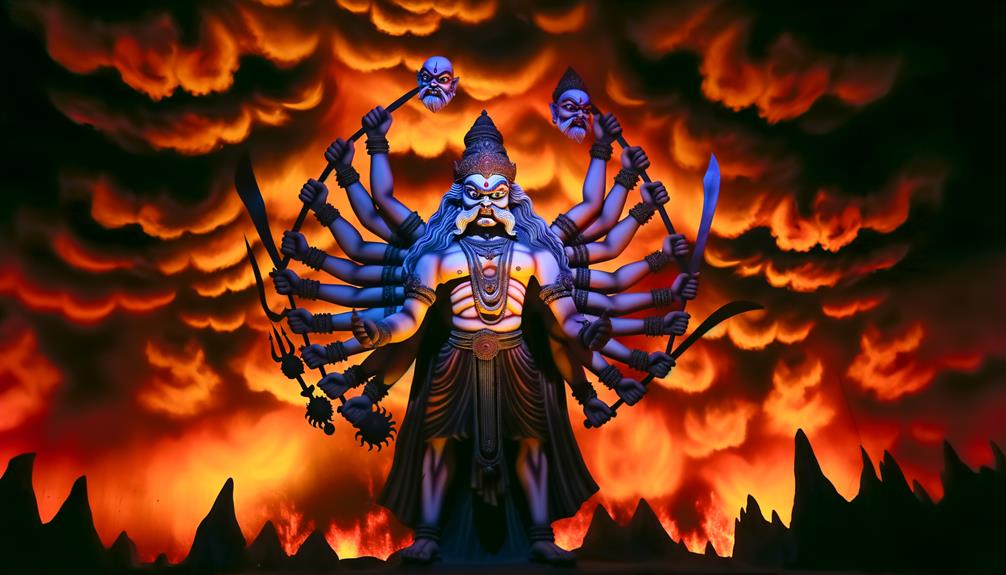Table of Contents
Nestled amidst picturesque paddy fields, Tampita Viharaya represents a unique architectural style in Sri Lanka, characterized by its elevated structure built on stone pillars. This ancient temple type flourished between the 17th and 19th centuries, showcasing the rich cultural heritage of Buddhism in the region.
Architectural Features
Tampita Viharayas are constructed on wooden platforms elevated by stone stumps, typically three to four feet high. The roofs are supported by timber structures, while the walls are often made of wattle and daub. Inside, a central seated Buddha statue is flanked by additional statues of deities, crafted from clay, timber, or limestone. The inner walls are adorned with vibrant frescoes depicting Jataka tales and scenes from the Buddha’s life, reflecting the artistic prowess of the Kandyan period.
brief history of Tampita Viharaya
Tampita Viharaya refers to a unique type of Buddhist temple in Sri Lanka, characterized by its construction on stone pillars. This architectural style emerged during the Kandyan period, particularly flourishing between the 17th and 19th centuries.The earliest examples, such as the Medawala Viharaya, date back to the 14th century. These temples typically feature a wooden platform elevated on stone stumps, with intricate frescoes depicting Jataka tales and a central seated Buddha statue. Over 200 Tampita Viharayas have been identified across Sri Lanka, mainly in the North Western, Sabaragamuwa, Central, and Western provinces.While initially built as image houses, many later incorporated Devales for Hindu deities, reflecting the syncretic nature of Sri Lankan spirituality. Today, Tampita Viharayas stand as vital cultural and historical landmarks, showcasing the island’s rich architectural heritage and artistic expression
Historical Significance

The earliest recorded Tampita Viharaya is the Medawala Tempita Vihara in Kandy, dating back to the 14th century. This architectural style gained prominence during the Kandyan era, with over 200 identified structures across the island, particularly in the North Western, Sabaragamuwa, Central, and Western provinces. The last known construction of a Tampita Viharaya occurred in 1886, marking the end of this architectural trend.
Cultural Importance
Tampita Viharayas were initially built as image houses for Buddhist worship but later evolved to include Devales dedicated to various deities. This adaptability highlights the syncretic nature of Sri Lankan spirituality, where Buddhist and Hindu practices coexist harmoniously. Each Tampita Viharaya serves as a testament to the local community’s devotion and artistic expression, making them vital cultural landmarks.
Visiting Tampita Viharaya
For tourists, visiting a Tampita Viharaya offers a glimpse into Sri Lanka’s rich history and architectural ingenuity. The serene surroundings and intricate designs provide a peaceful retreat from the bustling modern world. Popular sites include the Edandawala and Medawala Viharayas, each showcasing the distinctive features of this architectural style. Visitors can explore the frescoes and sculptures, gaining insight into the spiritual and artistic heritage of the region.
Main differences between Tampita Viharaya and traditional Buddhist temples.

The Tampita Viharaya and traditional Buddhist temples in Sri Lanka exhibit several distinct differences in their architectural design, construction methods, and historical significance.
Architectural Design
- Structure:
- Tampita Viharaya: This temple type is built on elevated stone pillars, typically standing 3 to 4 feet high. The structure features a wooden platform supported by these pillars, with walls made of wattle and daub. The roof is timber-framed, giving it a unique elevated appearance.
- Traditional Buddhist Temples: In contrast, traditional temples are generally constructed directly on the ground without elevation. They often feature solid masonry walls and roofs made of clay tiles, with intricate carvings and designs that reflect local architectural styles.
- Interior Features:
- Tampita Viharaya: The interior usually contains a central seated Buddha statue, accompanied by other statues of deities. The walls are often adorned with frescoes depicting Jataka tales and scenes from the Buddha’s life.
- Traditional Buddhist Temples: These temples may also house Buddha statues and frescoes, but they often include more elaborate altars, shrines, and additional structures such as stupas and assembly halls.
- Historical Context
- Era of Construction:
- Tampita Viharaya: This architectural style gained prominence primarily during the Kandyan period, from the 17th to the 19th centuries. It reflects a specific cultural and artistic expression of that era, with over 200 identified structures across Sri Lanka.
- Traditional Buddhist Temples: Traditional temples have a longer history, with many dating back to ancient times, including the Anuradhapura and Polonnaruwa periods. They often incorporate various architectural influences that evolved over centuries.
- Functionality:
- Tampita Viharaya: Initially built as image houses for worship, many Tampita Viharayas later incorporated Devales for Hindu deities, showcasing a syncretic approach to spirituality in Sri Lanka.
- Traditional Buddhist Temples: These temples primarily serve as places of worship for Buddhist practices and rituals, often focusing solely on the teachings of Buddhism without the inclusion of other religious practices.
- Cultural Significance
- Symbolism:
- Tampita Viharaya: The elevated structure symbolizes a connection to the divine, representing the idea of rising above the earthly realm to reach spiritual heights.
- Traditional Buddhist Temples: These temples often symbolize the community’s devotion and serve as centers for religious gatherings, education, and cultural events.
- Artistic Expression:
- Tampita Viharaya: The frescoes and sculptures in Tampita Viharayas reflect the artistic traditions of the Kandyan era, emphasizing local styles and narratives.
- Traditional Buddhist Temples: The art in traditional temples may include a broader range of influences, showcasing various styles from different historical periods and regions.
- In summary, while both Tampita Viharaya and traditional Buddhist temples serve as important religious and cultural sites in Sri Lanka, they differ significantly in their architectural design, historical context, functionality, and cultural significance. The Tampita Viharaya stands out for its unique elevated structure and the specific historical period it represents, while traditional temples encompass a broader range of architectural styles and historical influences.

Conclusion
Tampita Viharaya stands as a remarkable symbol of Sri Lanka’s ancient architectural legacy. Its unique design and rich history make it a must-visit for anyone interested in the island’s cultural heritage. Whether you are a history enthusiast, an architecture lover, or a spiritual seeker, exploring these ancient temples will undoubtedly enrich your understanding of Sri Lanka’s vibrant past.




